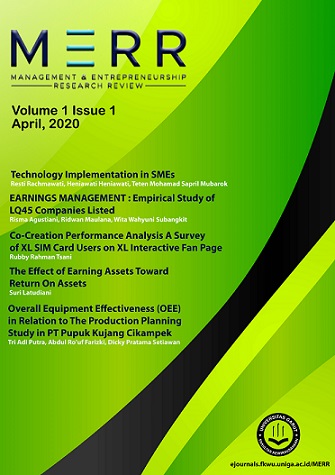Co-Creation Performance Analysis
A Survey of XL SIM Card Users on XL Interactive Fan Page
Abstract
Purpose- To conduct a survey study on Co-Creation performance analysis on XL SIM card users on XL interactive fan page. Co-creation, as a marketing strategy, aims at building character and improving product performance through collaboration with customers. This strategy is expected to increase sales and potential markets. Telecommunication is one of the industrial sectors with greatly potential marketDesign/Methodology/Approach The research method used was cross-sectional method. This study was carried out with the margin of error 0.05, the degrees of freedom of dk (n-2), and one-sided test; one-tailed test. Hypothesis testing was used to determine whether the hypothesis was accepted or rejected.
Findings- Co-creation performance on XL product comprised of Interaction Across, Option, Access, and Price experience. The assessment of access had highest dimension in creating customer value and had impact on customer satisfaction. On the contrary, option dimension was the lowest one.
Research Limitations/Implications- Co-creation had come to be value-added product as the result of collaboration between producer and customers. However, the customers considered the performance of co-creation; option dimension, did not work effectively.
Practical Implications- The results indicated that value dimension had highest average on the co-creation performance of XL sim card users. Contrarily, the smallest value obtained was option dimension. This implied that XL had provided enough access between customers and the company. Accordingly, the company knows exactly customers' needs and expectation. The customers can also choose what they need and expect from the product used.



